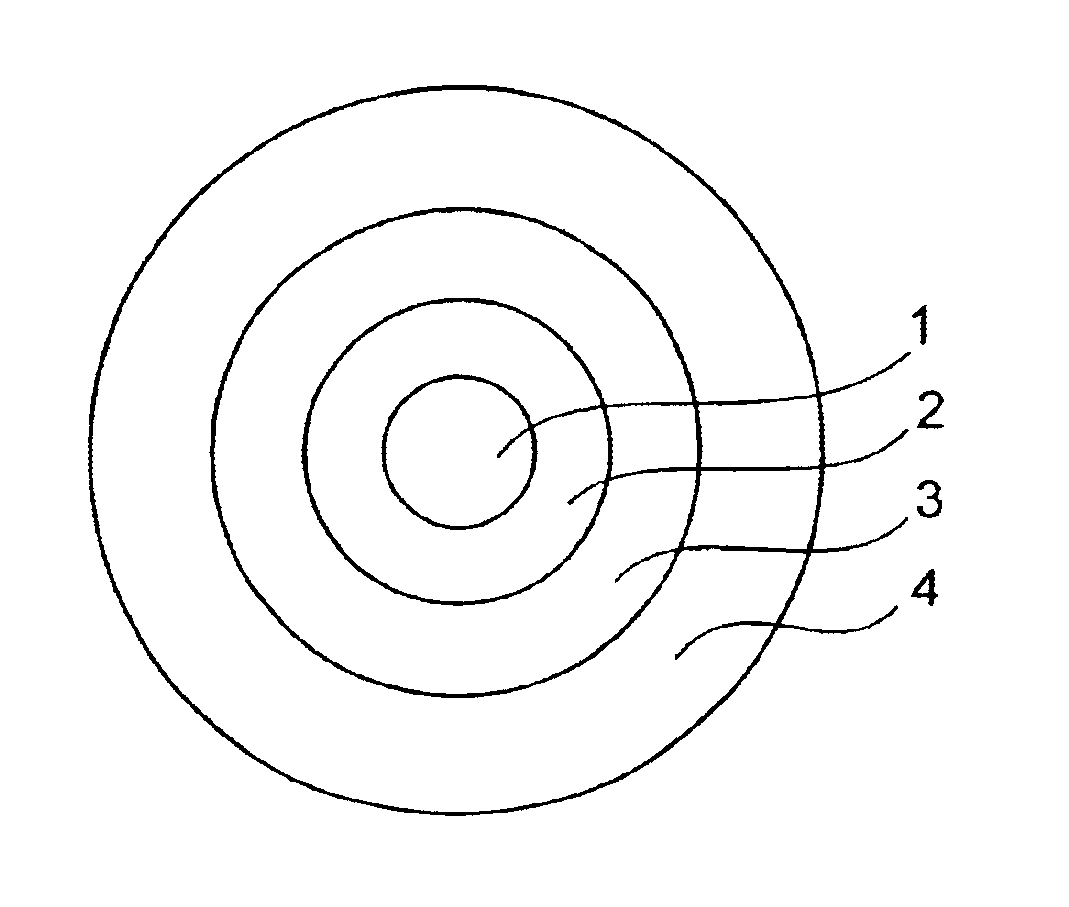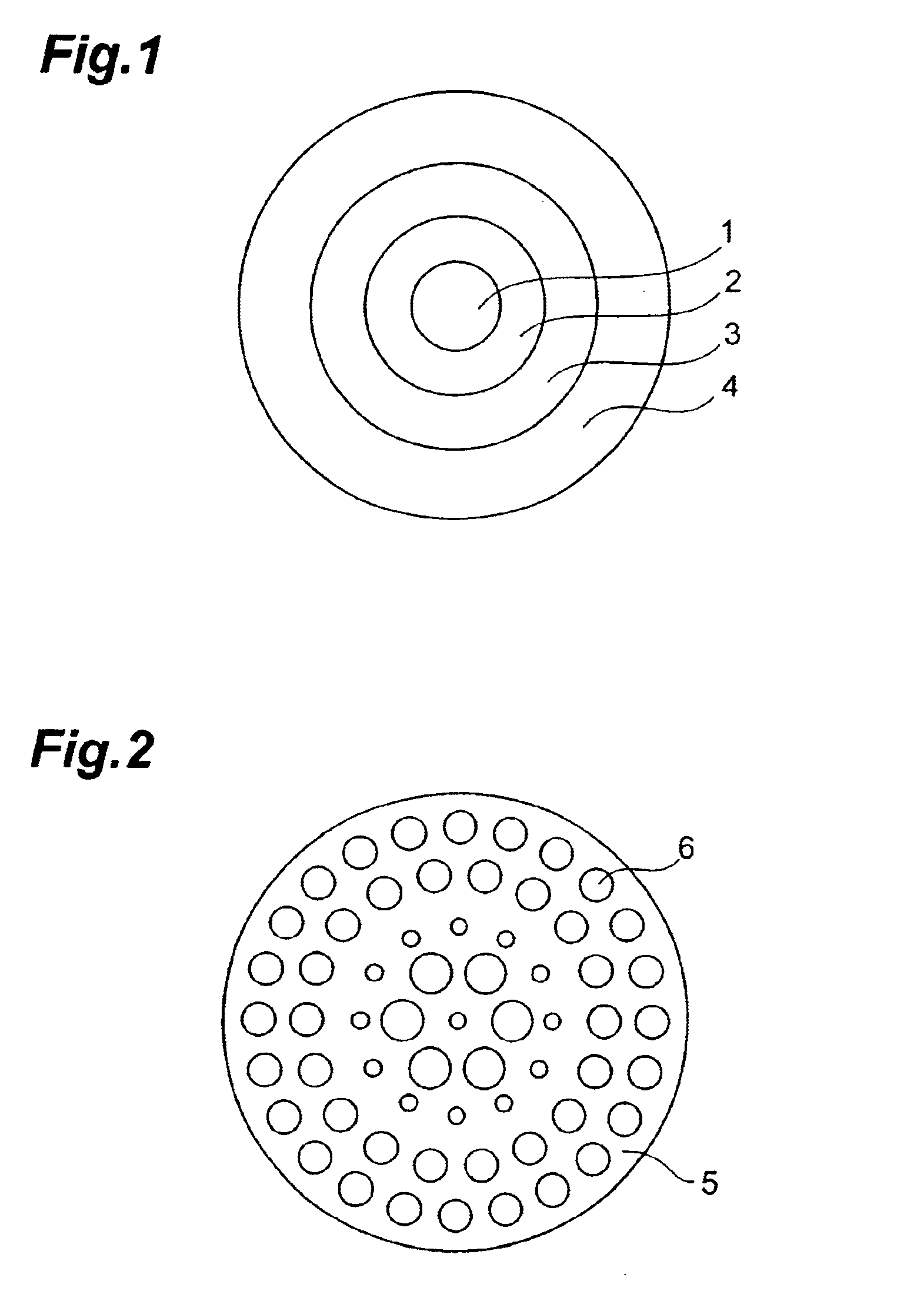Microstructured optical fiber
a microstructured, optical fiber technology, applied in the direction of optical fiber with multi-layer core/cladding, optical waveguide light guide, instruments, etc., can solve the problems of reducing increasing the bending loss, increasing the sensitivity to the fluctuation of the structural parameters of the effective core area, etc., to reduce the excess transmission loss, high bit rate, and optical fiber robust
- Summary
- Abstract
- Description
- Claims
- Application Information
AI Technical Summary
Benefits of technology
Problems solved by technology
Method used
Image
Examples
second embodiment
In this manner, since the optical fiber has the large effective core area, the occurrence of the nonlinear optical phenomena can be suppressed whereby the transmission quality can be enhanced.
FIG. 13 is a view which shows the calculated result of the effective core area when the respective pitches L of the examples 2, 3 and the comparison example 2 are changed in a comparison form. Here, the pitches L are set such that the effective core area Aeff at the wavelength of 1550 nm becomes 12 μm2in all of the examples 2, 3 and the comparison example 2. That is, the pitch values are respectively set to 1.33 μm in the example 2, 1.53 μm in the example 3 and 1.21 μm in the comparison example 2.
Focusing on the change of the effective core area Aeff at the wavelength λ=1550 nm, with respect to the magnitude of the change of the effective core area Aeff relative to the change of the wavelength, the example 2 has the smaller magnitude of the change of the effective core area Aeff than the compa...
third embodiment
Accordingly, the optical fiber of the third embodiment can reduce the sensitivity of the structural chromatic dispersion to the shape of the voids. Further, with the introduction of the voids, the bending loss can be reduced. In general, when the chromatic dispersion is displaced from a given value, the deterioration of the transmission quality caused by the residual dispersion in the transmission path occurs and hence, the high fabrication accuracy is required with respect to the chromatic dispersion. On the other hand, the bending loss is only required to be lower than a given threshold value, no high fabrication accuracy is required with respect to the bending loss. In the optical fiber of this embodiment, although the bending loss depends on the shape of voids, the chromatic dispersion does not depend on the shape of voids and hence, the demand for the fabrication technique with respect to the accuracy of the shape of voids can be alleviated.
In any one of examples 4 to 6, as in ...
PUM
 Login to View More
Login to View More Abstract
Description
Claims
Application Information
 Login to View More
Login to View More - R&D
- Intellectual Property
- Life Sciences
- Materials
- Tech Scout
- Unparalleled Data Quality
- Higher Quality Content
- 60% Fewer Hallucinations
Browse by: Latest US Patents, China's latest patents, Technical Efficacy Thesaurus, Application Domain, Technology Topic, Popular Technical Reports.
© 2025 PatSnap. All rights reserved.Legal|Privacy policy|Modern Slavery Act Transparency Statement|Sitemap|About US| Contact US: help@patsnap.com



